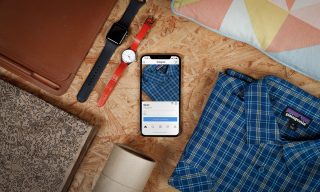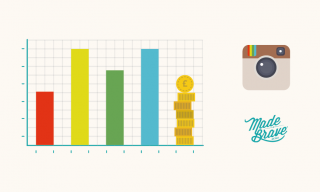Ears are open for business – how will brands extend their experience into voice?
“Alexa – could you play the original Super Mario Bros soundtrack? Great, thanks!”
Whether it’s on our phones, in our cars or sitting on top of our kitchen counters – through Alexa, Siri or Google Home, the voice of the machine is pretty much everywhere we go.
According to a report by the folks over at Consumer Intelligence Research Partners, there were only 5 million home automation devices on the market in 2016 – and all of them belonged to Amazon. Fast forward a few years, it’s reported that Amazon has sold more than 100 million Alexa devices and over 52 million Google Home devices we snapped up in 2018 alone. So yeah, it looks like this whole voice thing is a pretty big deal.
Up until now, we’ve mainly used these devices to either a) entertain ourselves or b) automate really simple tasks (eg: switching the lights on or making your house cosy with NEST or HIVE). For users, the experience comes mostly from the convenience factor – which for brands, can be a huge opportunity.
Even though voice has been around for a while (remember radio?) the new age of voice has been supercharged with the introduction of AI. For brands, this is a fairly new medium to a mainstream audience, so they have to put the work in now to really understand the problems that voice could solve in a way that feels true to them.
“The key to optimising for voice search is knowing what the questions are likely to be and why your product is the answer” says Alessandra Alari, Head of Search and Digital User Experience for Google UK
“Brands need to understand how people are using the technology. For example, we’re seeing a lot of people use Google Assistant in the kitchen whilst cooking. This trend can be taken advantage of by brands supplying kitchen utensils, ingredients or even white goods”
Even though voice is essentially powered by machines, it’s potentially the future of personalisation – if the humans behind it teach it how to personalise, that is. Listening and speaking feel a lot more natural to humans that staring at a screen all day – which can be a great thing. However, it means that the experience has to be totally seamless and yep, easier than reading, scrolling and clicking on a screen. As designers, we have to think ‘voice first’ instead of trying to retro-fit our current systems to voice technology, with a few glitches here and there for bad measure. If your voice system isn’t as convenient as what’s already being used, your audience is going to roll their eyes and say ‘I’ll just Google it” – which anyone with a strong Scottish accent that Siri can’t understand has likely done on more than one occasion *raises hand*
The thing is, voice offers a lot more than just convenience. Think of it like face-to-face customer service – one of your team members could do their job perfectly and make things easy for your customer – great! Another member could do their job perfectly, make thing easy for your customer and be a shining beacon of positive light that makes your customer’s day. This only works in your brand’s favour. But, how do you replicate great customer service for a machine with a voice? That’s where personality and tone of voice work their magic.
Voice is essentially just another medium for your brand – and just like the copy on your packaging, or how your brand looks, it’s an opportunity to build brand sentiment. The big difference? Tone of voice is even more important in this case, because it’s all centred around having a conversation with your audience and tailoring that tone to the question asked. This is something that usually part of a social media manager’s job – except they’re human (for the most part). For voice technology, AI needs to be taught how to respond in every case, without a person behind it 24/7 to make sure that tone of voice is on brand.
This is why it’s so important to have those brand personality traits locked, loaded, and ready to go. This will influence tone of voice, which extends into what is now the role of an AI Personality Writer (yep, that’s a job and yep, sign us up). Basically, their job is to create responses, common phrases and flourishes that make that voice unique. Everyone jokes that robots sound like, well robots, but strong guidelines and help from AI Personality Writers, we can make them sound a whole lot more human (which is the whole point of brand, after all). If the brand personality shines through every single customer touchpoint in a way that’s consistent, it’s going to build trust and a lasting relationship between you and your audience.
How Brands Are Using Voice
Research from Salesforce suggests that nearly a third of marketing organisations (32%) are already using voice-activated personal assistants to support their customer experience in some form or another, but there are also brands having fun with voice beyond the functional stuff.
Tide
Tide (they make stain removing products) developed an Alexa skill that helps people to remove over 200 types of different stains. So, you’d ask something like:
“Alexa – how do I remove burrito sauce from a white t-shirt?”
And just like that, you’ll be given a step to step guide on how to do that. Somehow, we think this one in particular will come in handy at Casa MadeBrave.
Patrón
Under 18s, look away now (or whatever the legal drinking age is in your country – you know the sketch). Tequila brand, Patrón created ‘Ask Patrón’ a virtual bartender through Amazon Echo, Google Home and iOS. Grab your bottle, some glasses and shout across the room for the best cocktail ideas with step-to-step instructions as you make them.
This one gets top tequila on the campaign front – they’ve made it really easy for people to find ‘‘Ask Patrón’ through their website and social channels. Thumbs up from us!
Marks & Spencer x Britain’s Got Talent
“Is it just me, or did Ant & Dec just scan my Percy Pigs?”
Nope, you’ve not lost it. M&S recently partnered with Britain’s Got Talent with a voice-driven campaign through their self checkout tills. Some have argued that the presenter’s voices don’t really fit with the M&S vibe, but if anything, it’s a great example of how and where brands can use voice to drive campaigns, partnerships and brand experiences.
All of the best voice examples use voice technology as part of a larger strategy – voice on its own isn’t enough, it has to be woven throughout other elements to really make it valuable. Great voice experience is where brand personality and interaction design meet and that starts with knowing your audience and knowing how your brand can solve their challenges in a way that’s consistent, memorable and useful.
What are your thoughts on designing for voice? Tweet us!



